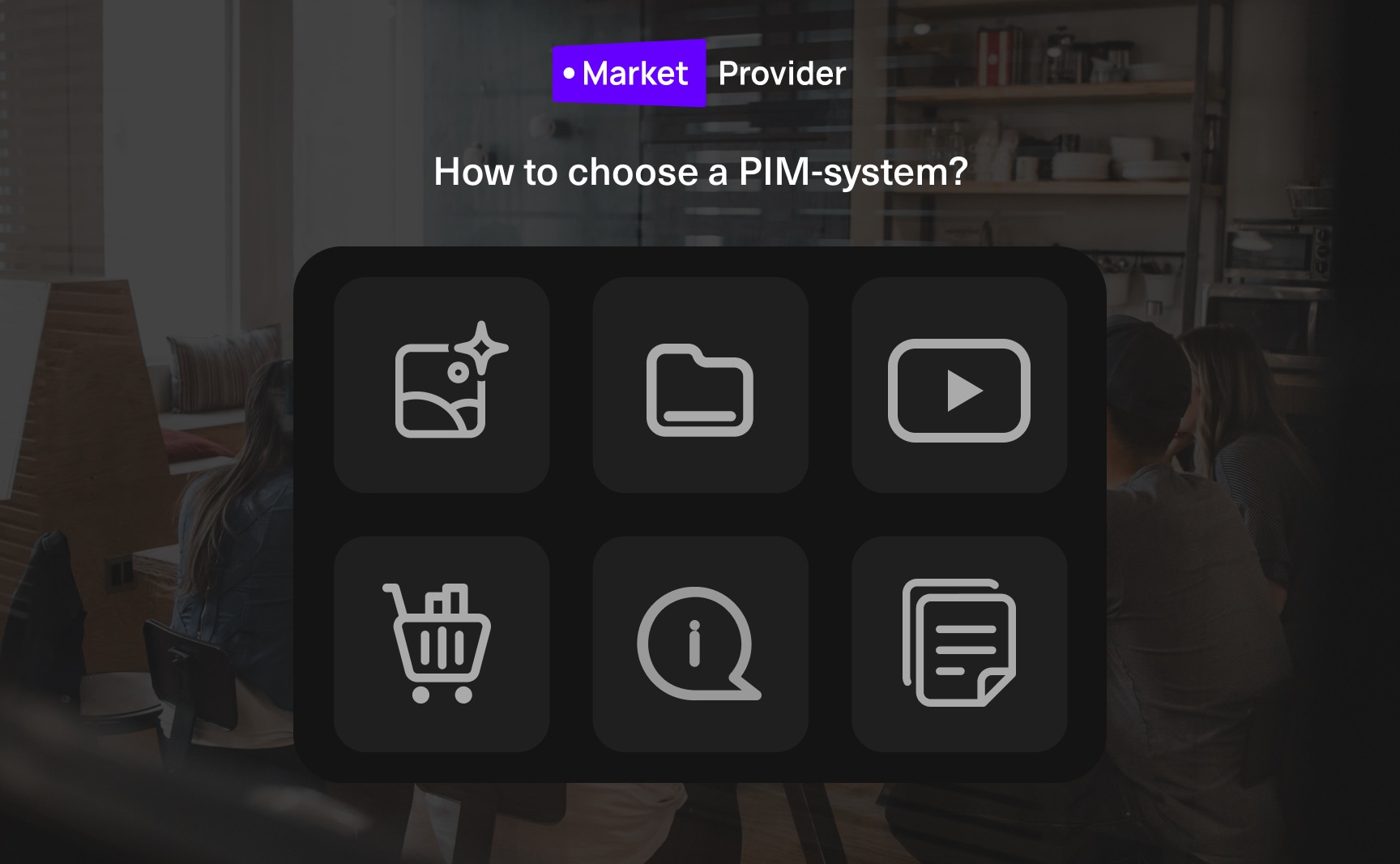When Should a Company Decide to Implement a Product Information Management (PIM) System?
Implementing a Product Information Management (PIM) system can significantly improve data management and enhance business process efficiency. However, the decision to implement a PIM system should be well-founded and timely.

Signs Indicating the Need for PIM Implementation
- Large Number of Products and Changes
If your company has an extensive product range that is frequently updated, especially in industries such as fashion, household appliances, electronics, cosmetics, DIY, where the assortment can change multiple times a year, a PIM system will help manage these changes effectively.
- Multiple Users
When numerous employees need to work with product information simultaneously, using Excel becomes inefficient. A PIM system ensures centralized data management, preventing errors and duplication of information.
- Complexity of Products
If your products have many attributes and variations, managing such data in standard databases or spreadsheets can become extremely challenging. PIM systems simplify the classification and management of complex products.
- Data Quality and Compliance
PIM systems offer tools to improve and maintain product data quality, including change logging and version control, which is crucial for regulatory compliance.
- Multiple Sources and Synchronizations
When you need to synchronize data with multiple suppliers daily, manual data import becomes inefficient. A PIM system automates these processes, ensuring data accuracy and timeliness.
- Numerous Customer Segments
The more customer segments you have, the more diverse views of the full product range need to be maintained. A PIM system allows for efficient management of these differences.
- Multiple Sales Channels
If your company uses various sales channels (print, web, mobile devices, etc.), a PIM system helps maintain different output formats and interfaces for each channel.
- International Operations
When your company operates in multiple countries and languages, a PIM system becomes essential for localization and content adaptation.
The decision to implement a PIM system should be based on an analysis of current business processes and company needs. If your company faces the challenges described above, implementing a PIM system can significantly enhance product information management, improve data quality, and simplify synchronization and distribution. These steps will lead to improved overall productivity and competitiveness for your company.

What to Consider When Choosing a Product Information Management (PIM) System
Choosing a Product Information Management (PIM) system is a crucial step for any company. Given the variety of available solutions, it is essential to know what to focus on when selecting a PIM system that meets your business needs and fosters growth.
Build or Buy
The first decision companies face is whether to build their own PIM system or purchase a ready-made solution. While developing a custom system may offer more customization opportunities, ready-made solutions typically provide shorter implementation times and lower maintenance costs. Furthermore, modern PIM systems offer a high degree of no-code customization, making them more preferable for most companies.
Vendor Review
There are many PIM system vendors, and it is important to evaluate them not only based on their functional capabilities but also on other criteria such as manageability, reliability, adaptability, and users satisfaction.
PIM Selection Process
The process of selecting a PIM system involves several key stages:
- Forming a Decision-Making Group: Include all stakeholders in the team, including technical specialists and end-users. This will ensure a comprehensive evaluation of the system.
- Creating a List of Requirements: Determine which processes need to be supported by the system and prioritize them. Use the MoSCoW methodology* to assess the importance of features.
- Vendor Evaluation: Match your requirements with the vendors' offerings and request demonstrations of all key features on a working system.

Other Important Criteria
When choosing a PIM system, it is also important to consider:
- Total Cost of Ownership: Evaluate all expenses, including initial implementation costs and subsequent maintenance costs.
- Organizational Fit: Ensure that your company's culture and structure align with the chosen vendor and their integrator.
- Demonstrations: It is strongly recommended to request detailed system demonstrations to get an understanding of the system's real-world performance.
Selecting the right PIM system requires careful analysis and consideration of various factors. By following these recommendations, you can choose a system that effectively supports your business processes, ensures high data quality, and helps achieve your company's strategic goals.
*MoSCoW Methodology (MoSCoW Prioritization or MoSCoW Analysis) is a requirements management technique used to prioritize different tasks, requirements, or project functions.
- Must have (M): Critical elements that are essential for the project's success. Without them, the project cannot be completed or would be considered unsuccessful. These requirements must be fulfilled first.
- Should have (S): Important but not critical elements. They are desirable and have a significant impact on the project but are not essential for its completion. If they are not fulfilled, it will not lead to project failure but may reduce its effectiveness or quality.
- Could have (C): Desirable elements that would be beneficial but are not prioritized. They can be completed if resources and time allow, but their absence will not affect the project's core success.
- Won't have (W): Elements that will not be included in the current release or project. These are functions or tasks that may be considered in the future but are not part of the current plan.